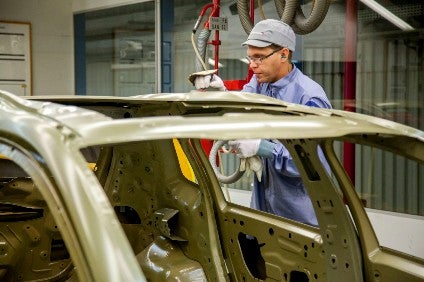
The year 2019 was quite good for the Brazilian auto industry although it could have been better.
Last month, for example, daily average sales were the best in six years, topping 13,173 registrations. This resulted in industry and dealer stocks of 33 days in December 2019, down from 38 days in November, slightly below the 35 considered normal.

Discover B2B Marketing That Performs
Combine business intelligence and editorial excellence to reach engaged professionals across 36 leading media platforms.
The early forecast for 2019 signalled 11% to 12% growth but the 2019 books closed on 8.6%.
The 2,787,858 units – light and heavy vehicles – sold in 2019 were sufficient to move Brazil up from eight to sixth largest world market though still long distant from 2012’s 3.8m which ranked the country fourth.
Production was hurt by the the fall in exports to the biggest market – Argentina – due to the economic crisis there.
Production rose just 2.3% year on year to 2.94m units.
Ranking of the 10 main brands remained unchanged: Chevrolet (18%), VW (16.3%), Fiat (13.4%), Renault (9.5%), Toyota (8.5%), Ford (7.6%), Hyundai (7.5%), Jeep (4.6%), Honda (4.5%) and Nissan (3.9%).
SUVs for the first time outsold saloons, long Brazilian buyers’ choice, and were in turn outsold only by hatchbacks.
One-litre models’ market share rose to 39%, the highest of the last eight years, thanks to the ever growing number of turbocharged versions.
What to expect in 2020 is the big question.
Traditionally, Fenabrave (the dealer group) and Anfavea (manufacturers) issue their forecasts early in January.
Both expect twofold economic growth, fully tamed inflation, credit offerings on the rise, cheaper financing, more confident consumer and employment sentiment.
Fenabrave usually is more prudent with forecasting yet this year estimated 9.6% sales growth.
Anfavea is expecting 9.4% and 3.05m registrations.
This year will see a number of new model launches which should help to heat up the market.
These will be both completely new products and updates of current models, supplemented by new imports from the Mercosur countries and Mexico.
Highlights include: the coupe-shaped VW Nivus compact SUV (Polo platform), two CAOA Chery models (Tiggo 8 SUV seven seat and Arrizo 6 mid-size saloon), together with new generations of the Peugeot 208 compact hatchback and 2008 compact SUV (both made in Argentina), Chevrolet Tracker compact SUV, a Honda Fit based compact SUV, the Nissan Versa compact saloon (made in Mexico), and Fiat’s Strada compact pickup truck.






